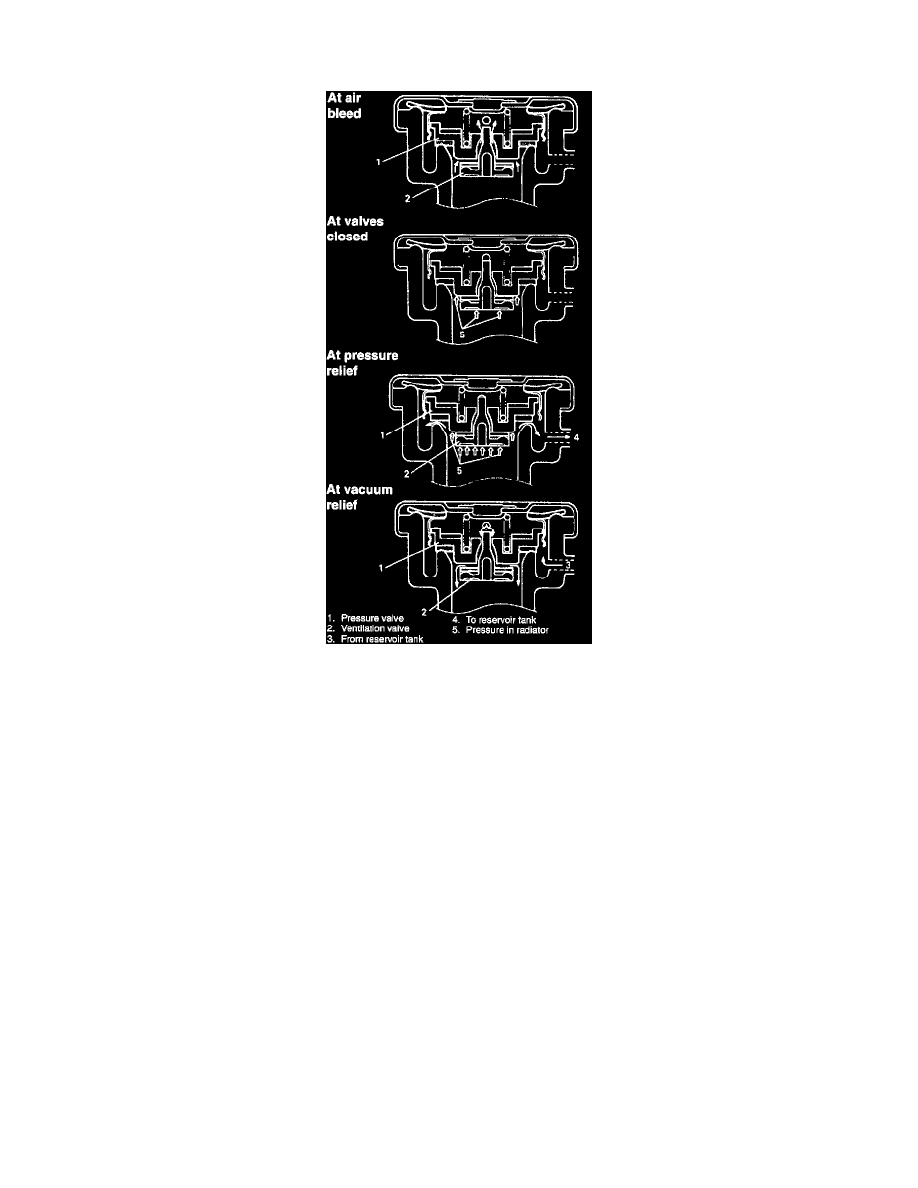Esteem GLX Wagon Plus L4-1.8L (1999)

Radiator Cap: Description and Operation
RADIATOR CAP
WARNING: As long as there is pressure in the cooling system, the temperature can be considerably higher than the boiling temperature of
the solution in the radiator without causing the solution to boll. Removal of the radiator cap while engine is hot and pressure is high will
cause the solution to boll instantaneously and possibly with explosive force, spewing the solution over engine, fenders and person removing
cap. If the solution contains flammable anti-freeze such as alcohol (not recommended for use at anytime), there is also the possibility or
causing a serious fire.
A pressure-vent cap is used on the radiator. The cap contains a pressure valve and ventilation valve.
The pressure valve is held against its seat by a spring of predetermined strength which protects the cooling system by relieving the pressure if the
pressure in cooling system rises by 90 kPa (0.9 kg/ CM2, 12.8 psi) for sedan or 110 kPa (1. 1 kg/cm2, 15.6 psi) for wagon.
NOTE: Do not remove radiator cap to check engine coolant level; check coolant visually at the see-through coolant reservoir tank.
Coolant should be added only to reservoir tank as necessary.
